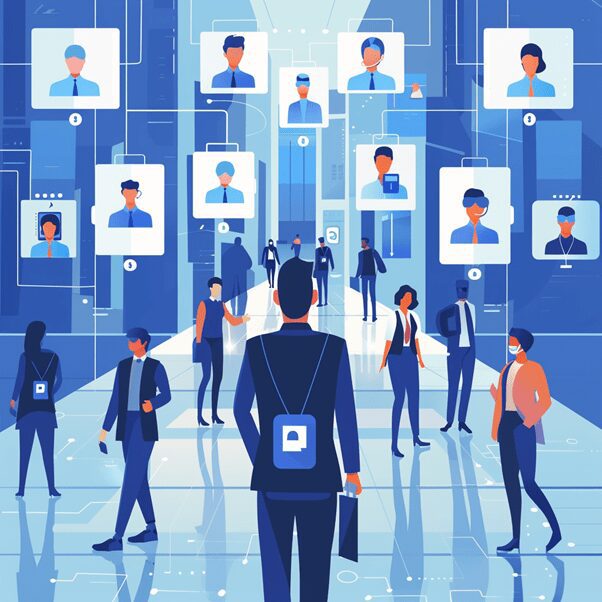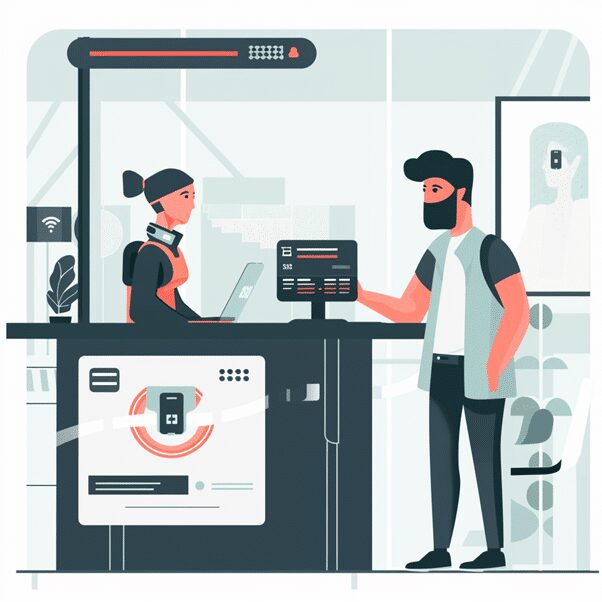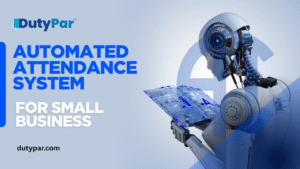AI-powered attendance systems streamline workforce management by automating tracking with technologies like facial recognition and biometrics, ensuring accuracy and saving time. They integrate seamlessly with payroll and HR systems, enhancing efficiency, transparency, and employee experience through real-time data and advanced analytics.

Table of Contents
Introduction
In today’s fast-paced business environment, optimizing efficiency is crucial for organizations to stay competitive. Traditional attendance tracking methods often involve manual processes that are time-consuming and prone to errors. However, with advancements in artificial intelligence (AI) technology, businesses are now adopting AI-powered attendance systems to streamline and enhance their workforce management processes. These systems utilize cutting-edge technologies like facial recognition, biometrics, and machine learning algorithms to automate attendance tracking, ensuring accuracy and saving valuable time. By leveraging AI, companies can significantly reduce administrative burdens, minimize errors, and gain real-time insights into employee attendance patterns. In this blog, we will explore how AI-powered attendance systems are revolutionizing the workplace by improving efficiency and productivity.
1. Automated and Accurate Attendance Tracking
AI-powered attendance systems leverage advanced technologies such as facial recognition, biometrics, and machine learning algorithms to automate the attendance tracking process. By eliminating the need for manual time keeping methods like punch cards or sign-in sheets, these systems provide accurate and real-time data on employee attendance. This automation reduces the administrative burden, eliminates errors, and saves valuable time for both employees and HR personnel. Furthermore, these systems enhance security by ensuring that only authorized personnel can clock in and out. The detailed analytics offered by AI-powered attendance systems also help organizations identify patterns in attendance, enabling them to make informed decisions regarding workforce management. Overall, the adoption of AI-powered attendance systems leads to improved efficiency, accuracy, and productivity, making them an essential tool for modern businesses.
2. Seamless Integration with Payroll and HR Systems
Integrating AI-powered attendance systems with payroll and HR systems creates a seamless flow of data, leading to enhanced efficiency. With accurate attendance records automatically fed into payroll systems, businesses can streamline their payroll processing, eliminate manual data entry errors, and ensure that employees are compensated accurately for their work hours. Furthermore, HR departments can access attendance data in real-time, enabling them to make informed decisions regarding leave management, performance evaluation, and resource planning. This integration not only improves operational efficiency but also enhances the overall employee experience by providing timely and accurate payroll processing. It reduces administrative burdens, allowing HR professionals to focus on strategic tasks rather than manual data entry. Additionally, the real-time access to attendance data helps in identifying attendance patterns and trends, which can be crucial for workforce planning and management. Overall, the integration of AI-powered attendance systems with payroll and HR systems fosters a more efficient, accurate, and proactive approach to workforce management.

3. Increased Transparency and Accountability
AI-powered attendance systems leverage advanced algorithms to accurately track employee attendance in real-time, eliminating manual errors and discrepancies. This digital approach not only enhances operational efficiency but also ensures fair and equitable treatment of all employees based on objective data. By automating attendance monitoring, these systems free up valuable administrative time, allowing HR personnel to focus on strategic initiatives and employee development. Furthermore, the transparency offered by AI-powered systems builds trust among employees, as they can easily access their own attendance records and resolve any discrepancies swiftly. This proactive approach fosters a positive work environment where accountability and punctuality are prioritized, ultimately contributing to overall organizational success and employee satisfaction.
4. Enhanced Employee Experience
Furthermore, AI-powered attendance tracking systems offer employers real-time insights into attendance patterns and trends. This data can help optimize workforce management strategies, such as scheduling shifts based on attendance trends or identifying potential issues early on. Moreover, these systems enhance accuracy by reducing human error in attendance recording and payroll processing, fostering trust and transparency between employees and employers. Overall, the integration of AI in attendance tracking not only streamlines administrative tasks but also cultivates a more efficient and harmonious work environment, where both productivity and employee satisfaction can thrive.
5. Advanced Analytics and Insights

AI-powered attendance systems offer robust analytics capabilities that go beyond basic attendance tracking. By leveraging machine learning algorithms, these systems can generate valuable insights and trends from attendance data. Businesses can identify patterns such as frequent absenteeism or late arrivals, enabling them to proactively address productivity issues. Moreover, these systems can help optimize staffing levels, predict resource needs, and identify areas for process improvement, ultimately enhancing overall operational efficiency.
Conclusion
AI-powered attendance systems are revolutionizing the workplace by streamlining and improving attendance tracking processes. Through automation, accuracy, and integration with payroll and HR systems, these systems enhance efficiency, increase transparency, and foster a culture of accountability. By providing valuable insights and analytics, businesses can make data-driven decisions and optimize their workforce management strategies. Embracing AI-powered attendance systems is a step towards a more productive and efficient workplace in the digital age.





